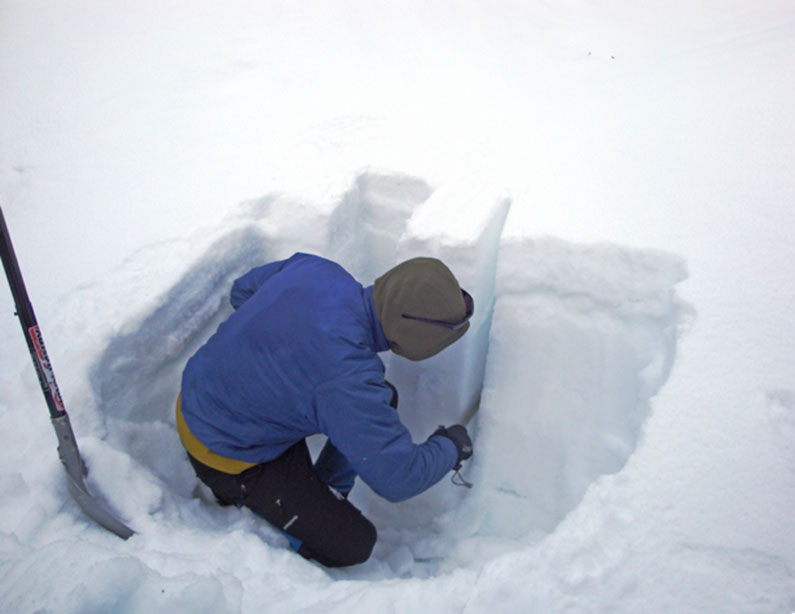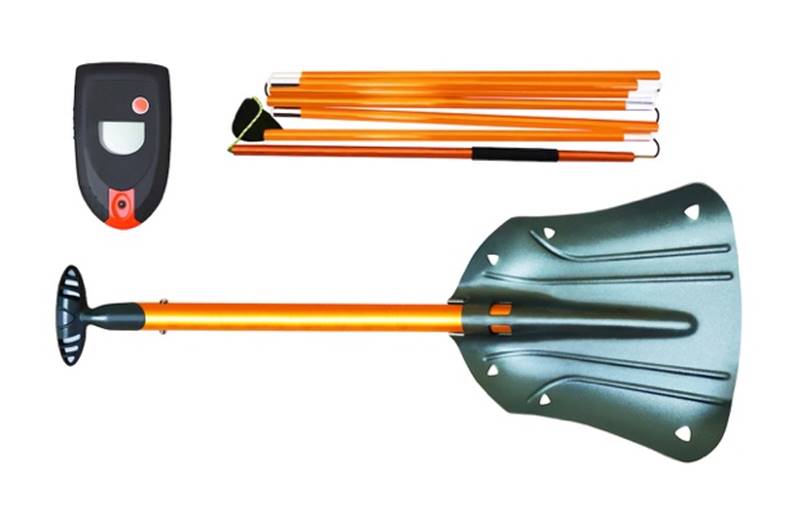I looked upwards towards the mountain’s North Col and saw the massive fissure in the snow created by the avalanche that had hit us moments earlier. Around me, Advance Base Camp was chaos, with a good friend dead and others severely injured. As a medic my troubles had only just begun. It was to take me 14 days to shift the casualties and deliver them to a warm hospital bed. Until that moment, avalanches were theory. I have now witnessed their devastating effect.


Anyone who visits winter mountains should understand snow. That is not only off-piste and on-piste skiers, but walkers and snowshoers, too. The fact is that the white stuff is unpredictable. When you least expect it, a slope begins to slide.
More than 90% of avalanches are caused by human activity. Each year over 100 people are killed by them in the European Alps, 40 in North America, 15 in Canada, and plenty more elsewhere. Peru’s 1970 Ancash earthquake set off an avalanche that killed more than 20,000 people, so snow slides must be taken seriously. Even Scotland has nearly 250 avalanches reported each year. Those near snow should be prepared for the unexpected.

There are tricks to improving the odds in winter mountains, especially for those away from a piste:
- Basic education
Avalanche courses are now available. Attend one, understand snow, what makes an avalanche, and how to react should one head for you. - Avalanche risk report
Go nowhere off piste without this. European grades are from 1 to 5; 1 is low risk, 5 is extreme. More than 50% of avalanche deaths occur when the risk is level 3, only 1% at level 5. This is because most understand that to do anything at level 5 is taking a gamble. - Mountain weather forecast
Find a mountain forecast specific to your region. Clear blue sky in the morning does not mean it will stay that way. Mountain weather changes rapidly. - Understand snow pits
If a snowfield worries you, dig a snow pit and put it to the test. Your avalanche course should show you. Be familiar with the extended column test for snow instability, which is fast becoming essential for off-piste winter travellers. - Carry rescue items
Because I spend so much time off piste, I am glued to three items, which I carry with me everywhere, on skis and off:
i. Avalanche transceiver. This emits a signal that allows me to be located if I am buried. I wear it against my body and do not put it in my rucksack.
ii. Avalanche probe – how else will I find my buried companion?
iii. Snow shovel – my blade volume is at least 2.5 litres.



- Airbag
When skiing off piste, I carry a rucksack that contains an airbag. This more than doubles my chance of survival in an avalanche. - Helmet
I always wear a helmet, on piste, off piste, everywhere. No longer do I feel self-conscious, as more than 70% of skiers now wear them. - Things I keep in mind when off piste
a. Avoid convex slopes inclined at 30-45 degrees.
b. Avoid obvious avalanche paths and terrain traps. A terrain trap is a concave part of an avalanche runout, where snow can bury me deeply.
c. Avoid overhanging cornices on the sheltered side of slopes.
d. Never presume that tracks left by others are safe.
e. When I cross a risky slope, I undo my rucksack’s waistband, loosen the shoulder straps, and hold my poles without their straps around my wrists. I can then jettison everything instantly should the worst happen.
f. I will make huge detours to avoid suspicious slopes.
g. Trees and boulders offer only limited protection. - Never be alone off piste
Who will rescue me if I am alone? - Should the worst happen…
Should an avalanche trigger, there are tricks I can try – jump upslope, move sideways, grab something solid, even swim with the slide. None assures my survival. I cannot outrun an avalanche, which may travel at 120 kilometres per hour. If I am buried, I want to use those moments before the snow solidifies to develop an airspace, as nearly 90% of avalanche deaths are from suffocation.

Should I need to dig for friends, there is a 90% chance they will survive if I find them within 15 minutes. By 30 minutes that falls to 30%. Anyone buried more than six feet deep has almost no chance of survival. It means I must begin rescue immediately and not wait for professional help. I telephone for assistance (Europe – 112; USA/Canada – 911) and then get started.
Got it? I hope so. Have a wonderful snowy holiday but take the white stuff seriously.
If you wish to avoid being avalanched, try these:
Basic education
Do not delay. Book yourself onto an avalanche awareness course right away, whether or not you intend to go off piste. They are fun, interesting, and may even save your life. They may possibly save someone else’s, too. Here are a few, but there are plenty more:
- American Institution for Avalanche Research and Education (AIARE), Chamonix
- Chamex Avalanche Awareness Course Level 1
- Cairngorm Adventure Guides – Avalanche Awareness for Skiers
- Glenmore Lodge (Sport Scotland) – Avalanche Awareness for Tourers and Freeriders
- Plas y Brenin (Sport England) – Avalanche Awareness
- Recommended films – I defy you not to be affected by these: https://www.pyb.co.uk/avalanche-awareness-films-to-get-you-educated/
Avalanche risk report
These are invaluable. Go nowhere in snow without one. Most ski areas should be able to supply them.
- For Scotland, try the Scottish Avalanche Information Service
- For the USA try https://avalanche.org
- For Europe try https://www.avalanches.org
Mountain weather forecast
- For the United Kingdom, try https://mwis.org.uk
- For Europe, try https://www.meteoconsult.co.uk/weather-map/continent-5/mountain-weather-forecast-europe-today
- My favourite is Meteoblue, which I carry on all mobile devices, as it covers the entire world
Understand snow pits
You may learn about these on your avalanche awareness course. These are pits dug vertically into the snowpack so that you can observe the layering and also perform stability tests. Read more: https://avalanche.org/avalanche-encyclopedia/snowpit/
Watch these videos:
- Snowpit basics with IFMGA guide Evan Stevens: https://www.youtube.com/watch?v=vcXogVHecFQ
- BackSide elevated education episode 14 – digging a snow pit: compression test
https://www.youtube.com/watch?v=FkXMW5k1-iM - How to perform an extended column test
https://www.youtube.com/watch?v=WRaZZuTE1is
Carry rescue items
- Avalanche transceiver
This is often called an ARVA (Appareil de Recherche des Victimes d’Avalanche). Many companies make them – ARVA, Backcountry Access (BCA), Ortovox, Pieps, Mammut, Black Diamond and others. - Perhaps consider the EVO4 by ARVA itself: https://us.arva-equipment.com/avalanche-transceivers/22-evo4-clip-for-safe.html
- Or, how about the Ortovox Diract Voice, the first avalanche transceiver with voice activation: https://www.ortovox.com/int-en/emergency-equipment/specials/diract-voice
- I am seriously old-fashioned and use a BCA Tracker, which has served me well: https://backcountryaccess.com/en-gb/p/bca-tracker-s-avalanche-transceiver
- Avalanche probe: Consider the Black Diamond Quickdraw Pro probe 320. I like my probes to be long: https://www.blackdiamondequipment.com/en_US/product/quickdraw-pro-probe-320/
- Snow shovel: Think about the Ortovox Snow Badger: https://www.ortovox.com/int-en/shop/categories/p50695-avalanche-shovels-shovel-badger
- Think about also wearing a Recco Reflector, a small electronic transponder, weighing less than 4g, which can be attached to a helmet or boot. It is non-powered and maintenance-free: https://www.snowsafe.co.uk/product/recco-reflector/
Airbag
These are real lifesavers but are heavy and require a trigger with compressed argon or nitrogen to deploy. Some airlines do not allow them on board, so triple check before you travel. The system works by having a base unit that houses the airbag and gas canister. The rucksack zips onto this base unit.
I use the ABS Vario series: https://abs-airbag.com/collections/vario
Helmet
I have smacked my head when skiing too many times to go without a helmet. Think about the Black Diamond Vapor helmet that weighs a meagre 199gms. Designed for climbing but try it for skiing. See: https://www.wildsnow.com/20487/black-diamond-vapor-helmet-review-ski/











